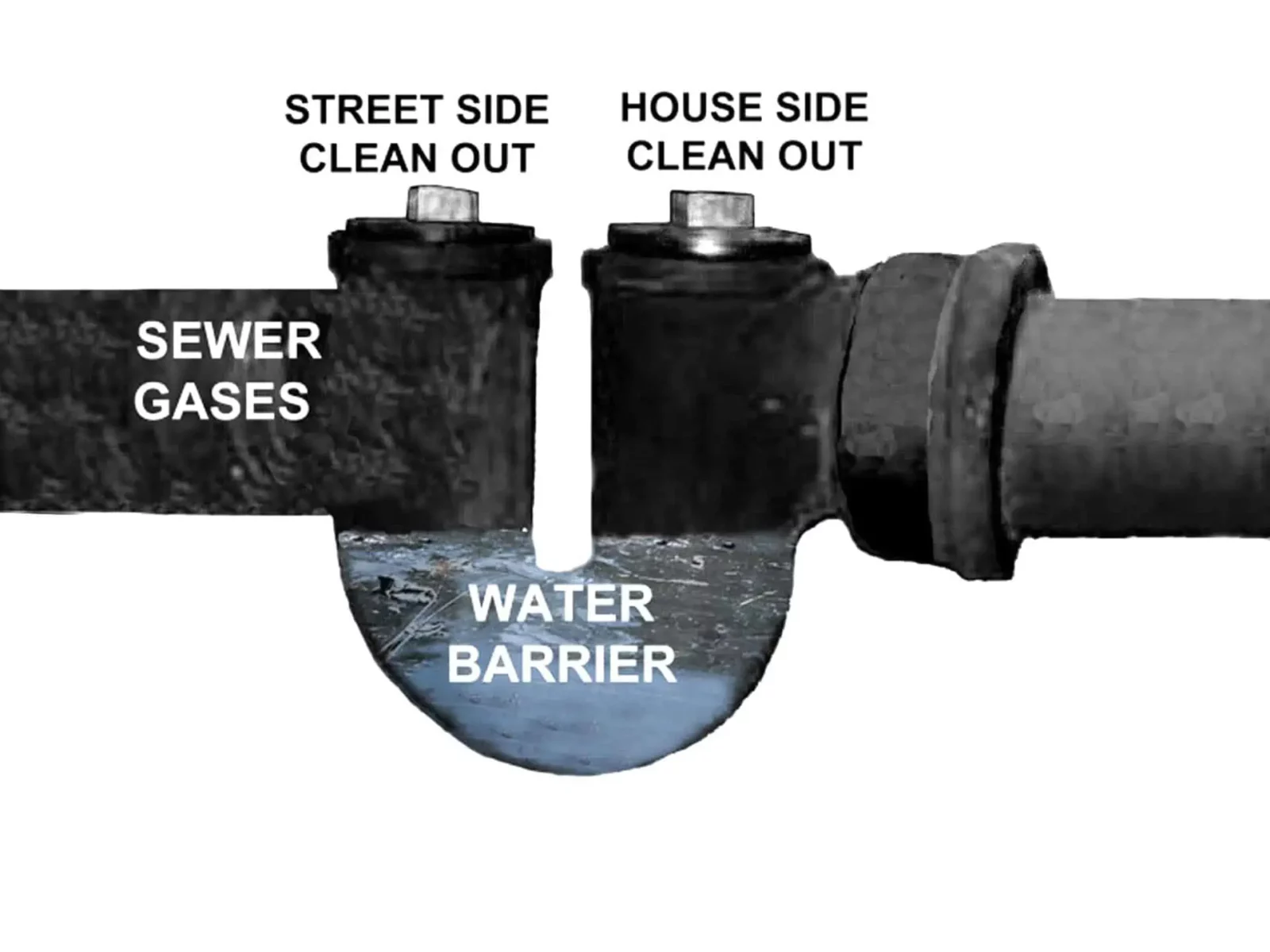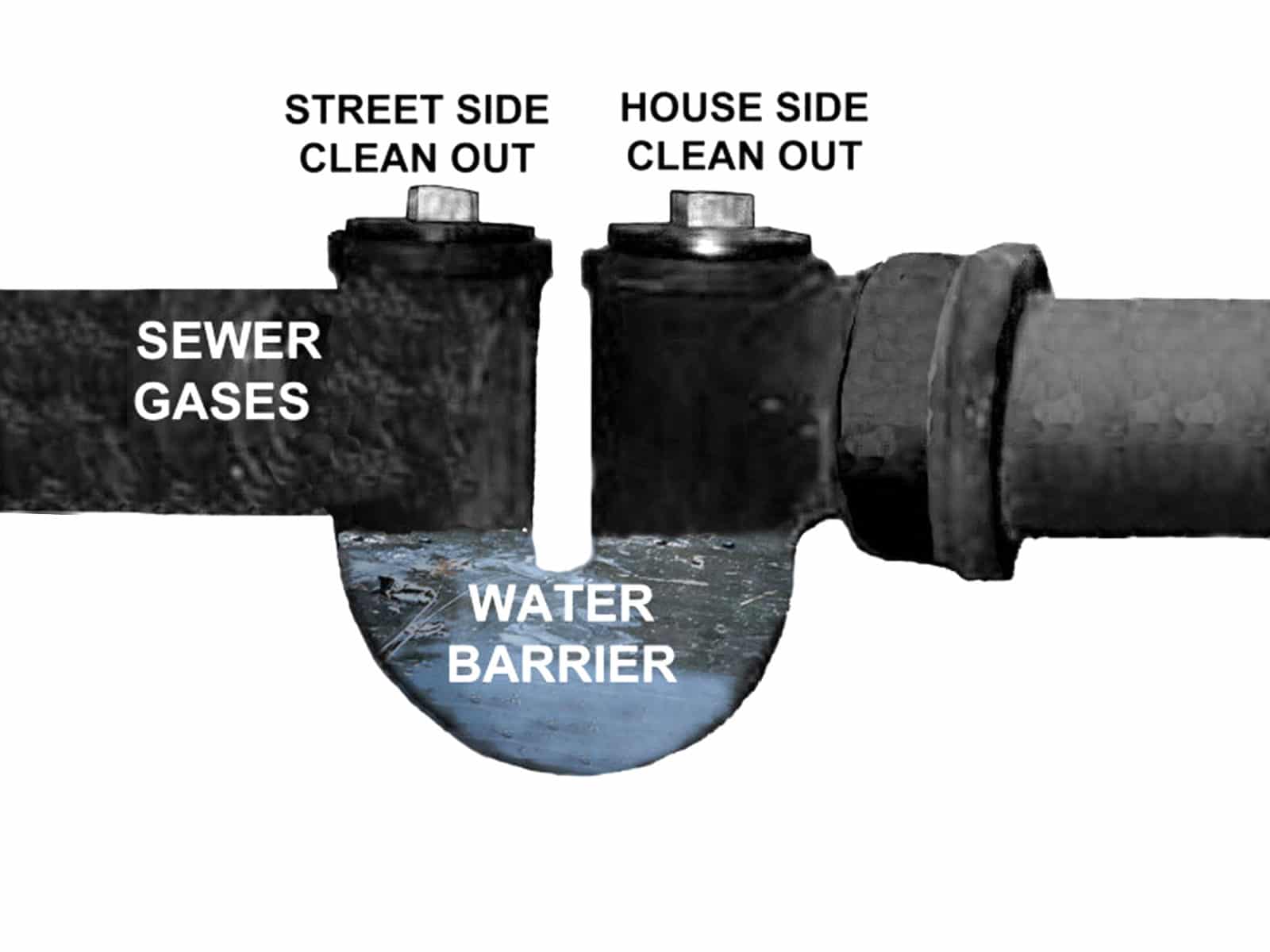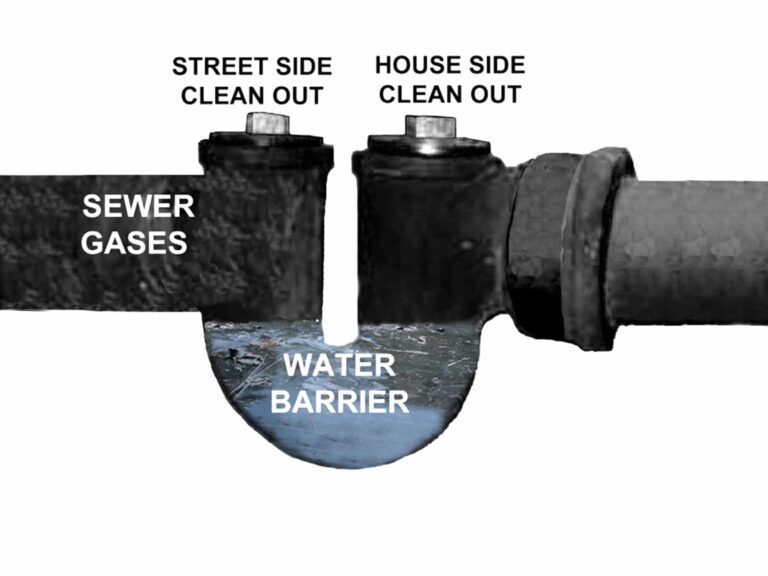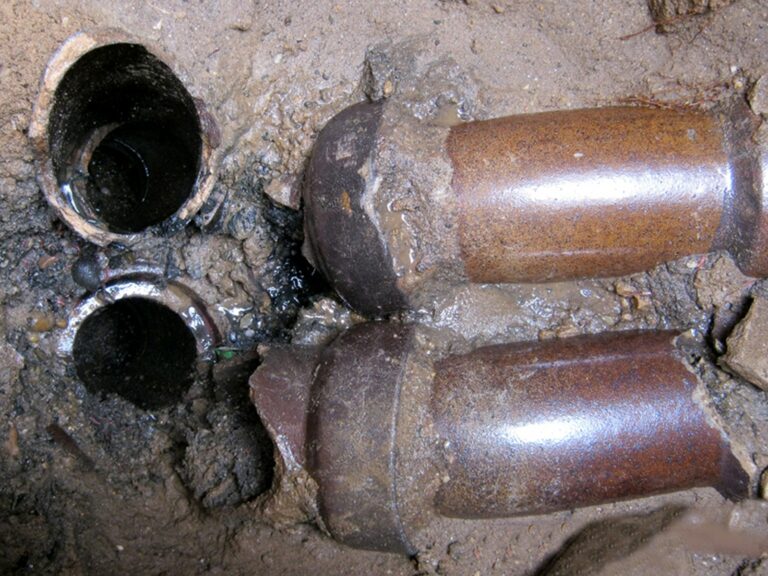All of your home’s plumbing is connected to your main house sewer line. Your sewer main drain is then connected to the public sewer, which has very specific sewer connection requirements. A clog in your sewer main drain can create a plumbing nightmare. Here’s what you should know about the warning signs of a clog in your house sewer drain system.
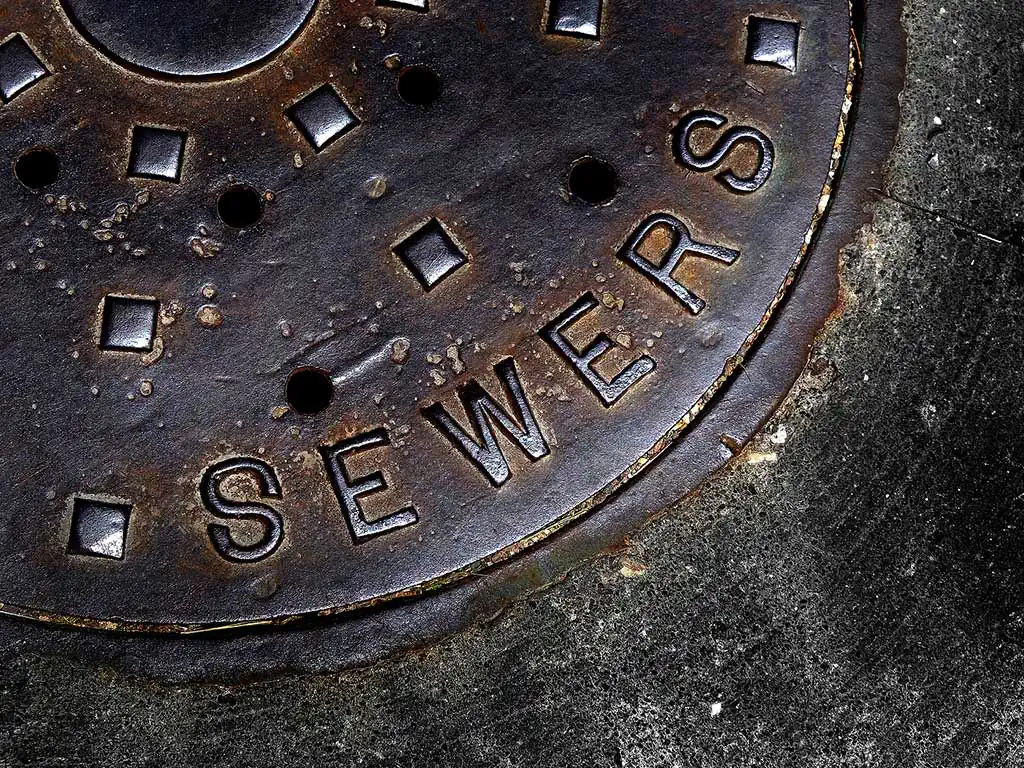
1) The Sewer Main Drain Basics
Your home is connected to the city sewer system by a house sewer drain pipe. A house sewer runs underground from the street to the house. Typically your main drain pipe is either 4″ or 6″ inches in diameter. The house drain inside your home is connected to your house sewer pipe at the front wall of your building. At that connecting point, there is typically a main house trap.
Your sinks, toilets, showers, and washing machines each have an individual branch line drain. These branch lines connect to your main house drain at some point. A branch line on a drain system is similar to branches on a tree that all connect to the trunk of the tree. If your main house drain becomes clogged, all of the other drains in the house can back up. That’s what makes a clog in the sewer main drain such a serious problem.
2) Warning Signs of a Clogged Sewer
How will you know if your sewer main drain is clogged? Here are several warning signs to look for to help determine if your home or business sewer drain system is clogged. If a main drain line cleaning is needed, the house trap near the front of the building is usually the best access point to get the job done. Using one of the two clean out sis the best way how to unclog a main drain pipe.
When Multiple Plumbing Fixtures are Clogged and Backing Up
One of the most visible signs of a sewer drain clog on a main sewer or branch line is when multiple plumbing fixtures become backed up at one time. The toilet is often the first to show signs of trouble, as it is a lower-lying plumbing fixture, as is a tub or shower drain. But any other plumbing fixture can also back up. Check the toilet first, then the other plumbing fixtures in your home.
If you feel is clog is in your underground drain system. Call a professional drain service. Opening a drain plug, only to get inundated with filthy waste water, will serve you no purpose.
Unusual Behaviors When Using Plumbing Fixtures
Watch out for unusual sounds or odd behavior from your plumbing fixtures, beginning on the lowest level of your home. Sewer backups begin at the clog and move upstream. Therefore, the drains on the lowest level are usually the first to experience issues. Check the following:
- Toilet: The toilet is where sewer problems usually first appear. You may have a problem with your main sewer drain if your toilet does not flush properly, or if you hear the toilet gurgling when water is running down the drains for your sink, bathtub, or washing machine.
- Shower: If you think you have a main sewer drain clog, see if the shower drain is backed up. If the backup is significant, tubs and showers may start to fill with wastewater.
- Bathroom sink: If you have a sewer problem, you may see the water level in the toilet rise or hear it gurgle when you run water in your bathroom sink.
- Laundry room: Another sign of a sewer clog may occur when you use your washing machine. Water draining from the washing machine may back up into the shower, or cause your toilet to overflow.
Frequent Drain Backups
If you have a drain that clogs again and again, especially if it is on your home’s lowest level, you may have a blockage in your main sewer drain. Put away the liquid drain cleaner and have your drain checked by a plumbing professional.
3) How to Check Your Drain Line Clean-Out
Most homes will have at least one clean-out on their main sewer lines. The clean-out is a short pipe, or a special Tee type fitting attached to a drain pipe. It is usually found in the yard, the basement, or crawlspace. A drain clean-out is usually required at every bend, change in direction, and before your house drain exits your home.
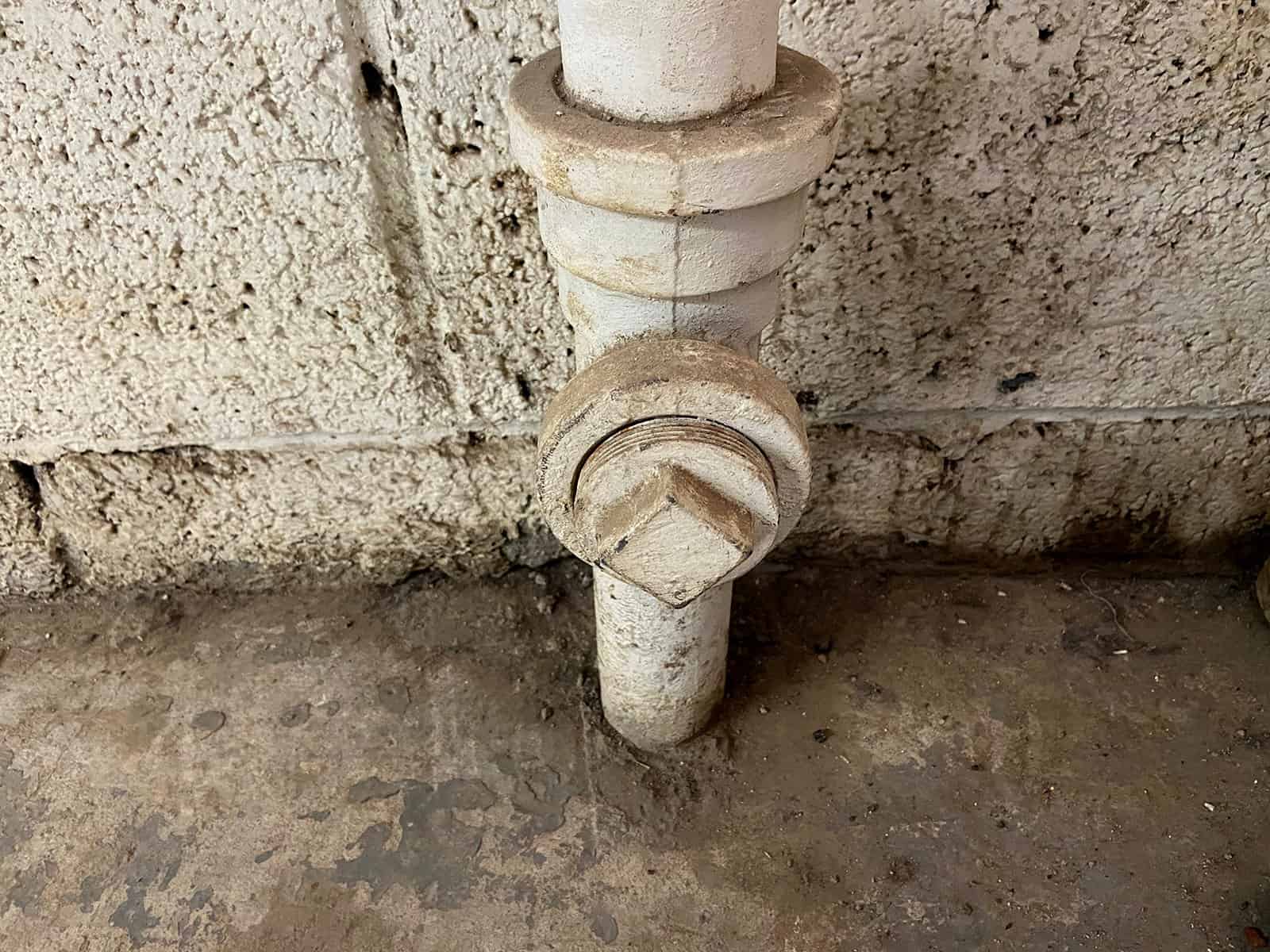
Your clean-out can sometimes be located outside your home. You can try to check it yourself but use caution. Outside sewer access pits can be deep, have broken steps, or pose a slip hazard.
If water spills out of the clean-out when you loosen the plug, tighten it back and call a plumber right away. When you remove the plug without water spilling out, look inside the drain itself. If there is water in the pipe, you probably have a clog in your sewer line.
Some Drain Clean-Out Pointers:
Do not mistake water in the bottom of your U-shaped trap for a clog. Water is always supposed to be present in the bottom of a drain trap.
- If you have a double vent trap, always open the side closest to the street. That way if you have a trap stoppage, the water has a place to run out.
- Clean-outs are required at every change in the direction of your home drain system. Therefore, clean-outs are usually present when a vertical drain connects to a horizontal drain (known as a stack).
- Small clean-outs are also usually located under every sink, and floor or area drain.
If your clean-out is in the crawlspace or the basement, do not remove its plug yourself! If your sewer main drain is backed up, there is a lot of pressure inside the pipe, and wastewater can spill out.
Team Balkan is Your Sewer, Drain, and Water Main Expert
For more assistance with your house sewer or drain lines, contact Balkan Sewer and Water Main Service. For over 70 years and over 90,000 customers, Balkan is The Team You Trust.
